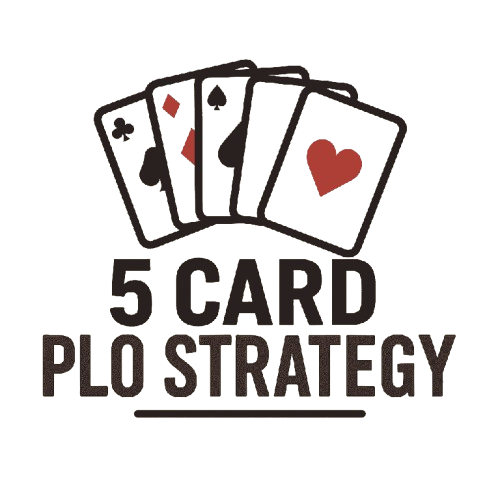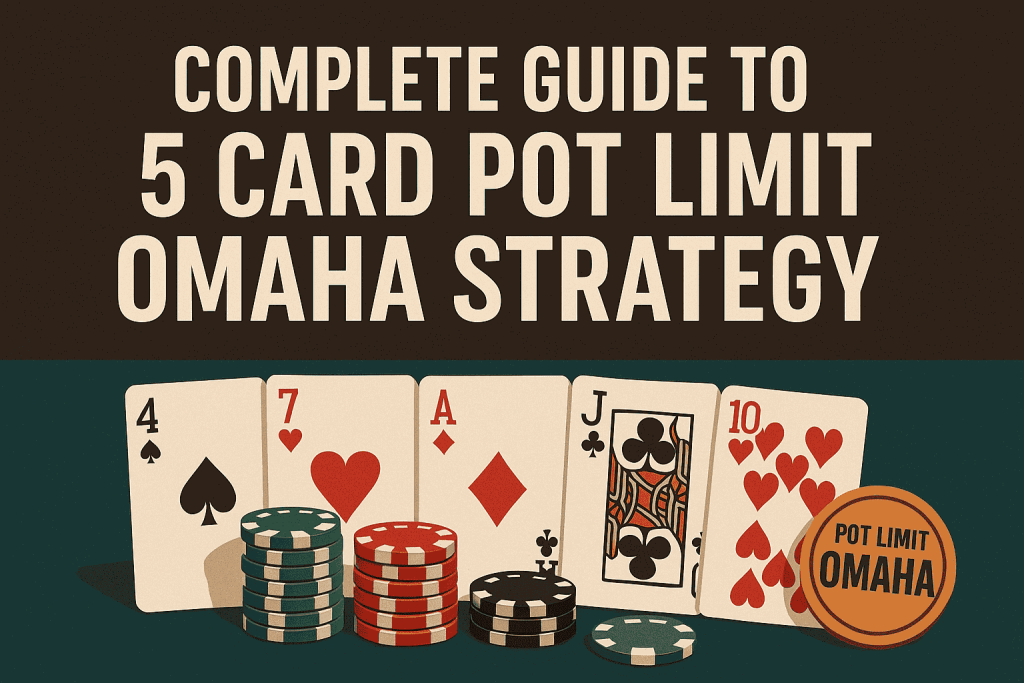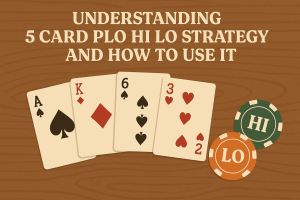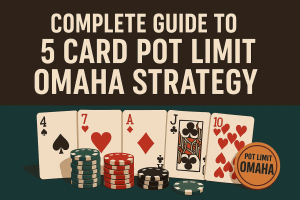The evolution of Omaha poker has brought several exciting variants to the forefront, with one of the most popular being 5 Card Pot Limit Omaha. Often referred to simply as 5 card PLO, this game retains the thrill of traditional Omaha while adding a layer of complexity that demands new strategic approaches. In this comprehensive guide, you’ll explore the foundational and advanced principles behind building a solid 5 card pot limit Omaha strategy, with a focus on how to succeed consistently in both casual and competitive environments.
What Makes 5 Card Pot Limit Omaha Unique?
In 5 card PLO, each player is dealt five private hole cards instead of the usual four. As in regular PLO, you must use exactly two of your hole cards and combine them with exactly three community cards to form your final hand. This one-card addition may seem small at first glance, but the mathematical implications are vast.
With more possible combinations in every hand, variance increases, but so does the potential for deeper strategic play. Understanding how to navigate this added complexity is the cornerstone of mastering your 5 card pot limit Omaha strategy. Strong hands pre-flop become less dominant post-flop due to more potential draws. Therefore, a nuanced approach to equity and hand selection is essential from the very beginning.
Constructing a Winning Pre-Flop Strategy
Many players transitioning from 4 card PLO find themselves overwhelmed by the increased number of playable hands in 5 card PLO. The key to success lies in knowing what to play and when. Not every hand with coordinated cards or multiple suits is playable. In fact, discipline in hand selection is even more critical.
Focus on hands with high connectivity, suitedness, and the potential to make nut hands. Double-suited hands with high cards and straight possibilities such as A-Q-J-T-9 are generally profitable. Avoid hands with too many gaps, weak suits, or disconnected low cards, as they are more likely to leave you with second-best hands on coordinated boards.
Another important pre-flop consideration in your 5 card plo strategy is position. As always in Pot Limit Omaha, being in position allows you to control the size of the pot and gather more information on your opponents’ actions. Play tighter out of position and open your range significantly when on the button or cutoff.
Post-Flop Play: Understanding Board Dynamics
The post-flop stage in 5 card PLO is where many players lose their edge. The sheer number of possible draws can make decision-making extremely complex. For this reason, board texture analysis should be one of the key pillars of your post-flop play.
Boards with heavy connectivity (e.g., 9-8-7) are likely to hit a wide portion of your opponents’ range. If you don’t have a strong made hand or a nut draw, it is often better to exercise caution. On drier boards (e.g., K-7-2 rainbow), you can more confidently continuation bet and try to take down the pot, especially in position.
Your ability to recognize when a board favors your perceived range versus your opponent’s can give you opportunities to apply pressure or play more defensively. For example, holding blockers to the nuts can turn marginal hands into strong bluffing candidates.
Reading Your Opponents in 5 Card PLO
A critical but often underused skill in 5 card pot limit Omaha strategy is opponent profiling. Pay close attention to how your opponents play specific types of hands. Some will overvalue bottom sets or weak flushes, while others will aggressively push with weak straight draws.
Against passive players, you can extract maximum value when you hit your strong hands. Against aggressive players, you need to be more cautious and look for opportunities to trap. Adapting to your opponent’s betting patterns, timing, and previous showdowns is essential to long-term success in this format.
Pot Control and Bet Sizing Strategy
With pot-limit betting rules, bet sizing in 5 card PLO becomes both a tactical and psychological weapon. Smart players use bet sizes not just to extract value, but also to deny equity and build pots strategically.
When you’re holding a strong hand with redraws, betting larger on the flop or turn makes sense. It helps reduce the number of opponents and increases your potential winnings. On the other hand, if you hold a vulnerable hand, it may be wise to check or use smaller bet sizes to control the pot size, especially when out of position.
Pot control is even more important in 5 card PLO cash games where deep stacks often come into play. Avoid bloating the pot with marginal hands or draws with limited nut potential. A good general rule is to build big pots only when you’re ahead or have significant fold equity.
Managing Equity and Draw Strength
In a game where players are often drawing to powerful hands, evaluating your draw strength correctly becomes one of the most important aspects of your 5 card plo strategy. You must distinguish between weak draws that rarely hit and strong draws that offer nut potential with multiple outs.
For instance, a wrap draw that allows you to hit the nuts in several ways is significantly more valuable than a basic straight draw or flush draw that doesn’t reach the top of the board. Always be thinking in terms of nut potential. In many cases, second-best hands will cost you more money than they’re worth if you don’t evaluate your equity correctly.
Bluffing and Pressure in 5 Card PLO
Bluffing has a place in 5 card PLO, but it must be approached differently than in No-Limit Hold’em or even 4 card PLO. Because of the increased odds that someone has connected with the board, successful bluffs require careful planning and relevant blockers.
Don’t bluff randomly. Instead, build your bluffs from hands that have some potential to improve (semi-bluffing) or hold blockers to the nuts. For example, if you hold two cards that block the top straight or top flush, a well-timed bet can convince your opponent to fold a weaker draw or even a middling made hand.
Choose your bluffing spots wisely, and ensure your story is consistent. Your bet sizes, timing, and previous actions must align with the strength you’re trying to represent. In high-stakes 5 card PLO cash games, bluffing without proper understanding will quickly become costly.
Table Dynamics and Game Selection
One of the simplest ways to gain an edge in any poker format is through smart table selection. This is especially true in 5 card PLO cash games where player quality varies significantly. Look for tables with looser, more passive players and avoid those filled with tight, aggressive regulars who understand the intricacies of the game.
Pay attention to stack sizes at your table as well. Deeper stacks offer greater implied odds and more room for creative post-flop play, while short-stacked tables often turn into shove-fests that limit your skill edge.
Bankroll Management in 5 Card PLO
Because of the increased variance in 5 card PLO, proper bankroll management is more critical than ever. Downswings can happen even when you’re playing well, simply due to the volatility of the game and the increased number of equity-split situations.
A general guideline is to maintain a bankroll of at least 50–100 buy-ins for the stakes you play, especially if you are playing professionally or semi-professionally. Recreational players should still maintain a disciplined bankroll to ensure they can handle losing streaks without tilting or going broke.
Improving Through Analysis and Study
The top players in 5 card PLO continually refine their strategy through hand analysis, coaching, and database review. Reviewing your sessions, identifying leaks, and studying hand histories will improve your decision-making over time.
You can also benefit from solver tools and training programs that focus specifically on 5 card PLO strategy. Tools like PLO Trainer or vision-based solvers help simulate different board runouts and opponent actions. A good resource to explore is this detailed breakdown from PokerCoaching.com’s PLO Strategy section, which dives into advanced topics and decision trees.
Conclusion: Mastering the 5 Card Pot Limit Omaha Strategy
Mastering 5 card PLO is not a quick process, but with the right mindset and strategy, it can be one of the most rewarding poker variants. The added complexity offers opportunities for skilled players to outthink their opponents and build a long-term edge.
By focusing on smart pre-flop decisions, understanding post-flop equity, controlling pot size, and staying disciplined in bankroll management, you can start seeing consistent results in your 5 card pot limit Omaha strategy. Keep studying, stay patient, and remember that long-term success comes from making consistently good decisions rather than chasing short-term outcomes.




